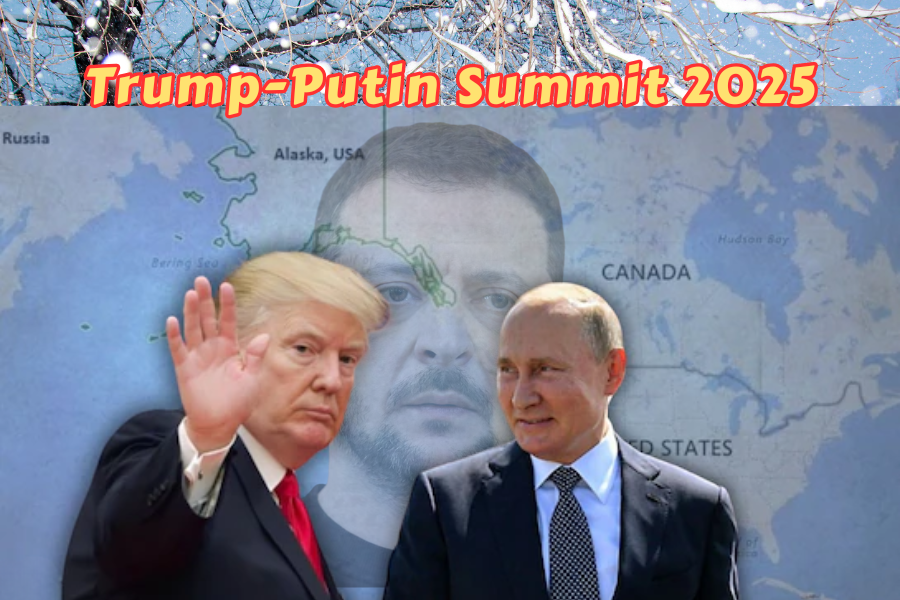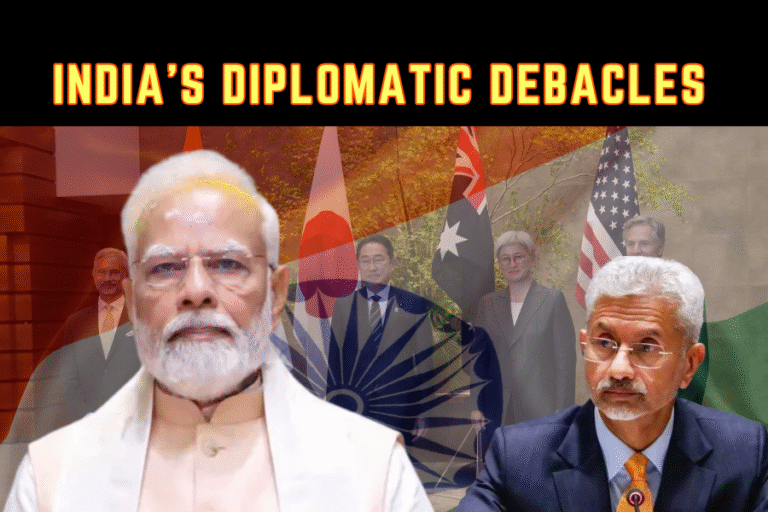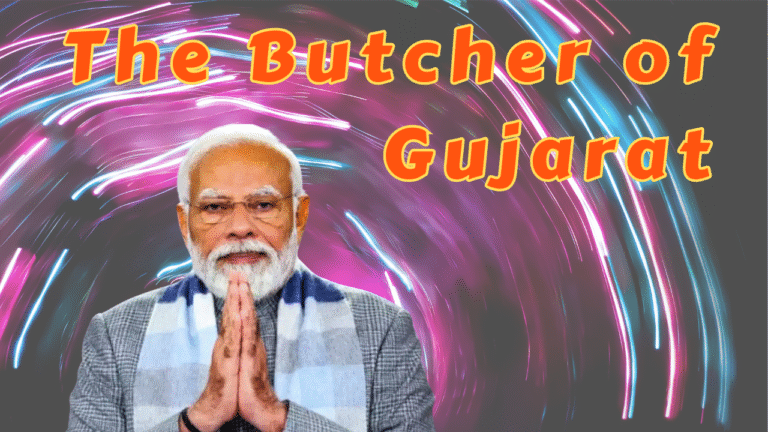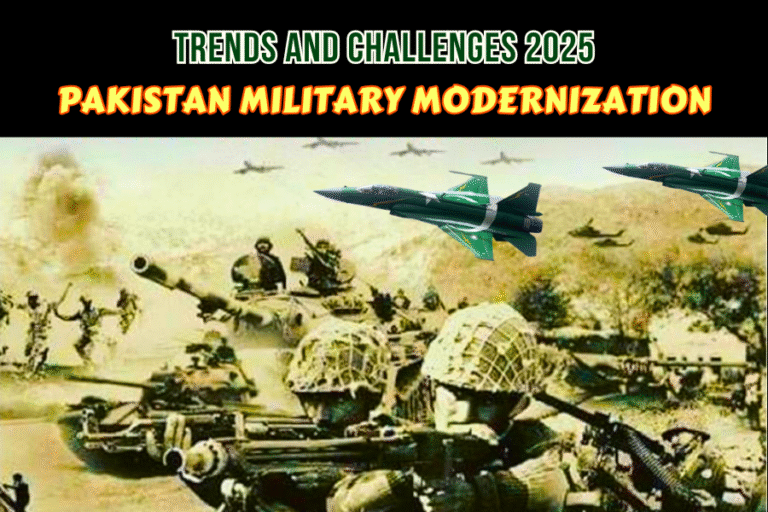(Ayesha Mahnoor)
Introduction: A High-Stakes Summit Met with Ukrainian Doubt
Today, on August 15, 2025, the Trump-Putin Summit in Alaska begins, drawing global attention but skepticism from Ukrainians about its peace prospects. For instance, held at Joint Base Elmendorf-Richardson, the summit seeks to address the Russia-Ukraine war, now in its fourth year. Consequently, President Donald Trump aims to broker a ceasefire, while Vladimir Putin pushes broader geopolitical talks. However, Ukrainians view it as no serious attempt to resolve the conflict peacefully. Therefore, this article explores the summit’s background, Alaska’s role, the Russia-Ukraine war’s history, and its global effects. Additionally, it examines Trump’s mediation motives, whether driven by peace or Nobel Prize ambitions. Furthermore, it assesses the impact of a failed outcome on India, a key Russian oil buyer. This analysis covers EU, NATO, and China perspectives, alongside future prospects.
The Trump-Putin Summit 2025 in Alaska is historic, marking the first U.S.-Russia leaders’ meeting since 2021, amid heightened global tensions. For example, Trump’s five calls to Putin in 2025 reflect his urgency to mediate the war, a key campaign promise. Nevertheless, Ukraine’s exclusion from direct talks fuels distrust, with Zelensky set for a post-summit briefing. Moreover, Alaska’s symbolic choice evokes U.S.-Russia history, adding weight to the discussions. The agenda includes territorial swaps and arms control, but deep divisions persist. Consequently, the summit could reshape alliances or deepen conflict, impacting India’s energy security. Thus, the Trump-Putin Summit 2025 in Alaska tests diplomacy, with outcomes affecting global stability and regional players like India.
Background of the Trump-Putin Summit 2025 in Alaska
The Trump-Putin Summit 2025 in Alaska stems from Trump’s pledge to end the Russia-Ukraine war swiftly, announced during his campaign. For instance, he claimed he could resolve the conflict in 24 hours, setting an August 8 deadline for Putin. Consequently, negotiations accelerated after Trump’s envoy, Steve Witkoff, met Putin in Moscow in July 2025. However, the summit was finalized hastily, with details confirmed only days prior, reflecting urgency. The agenda includes a one-on-one meeting with translators, followed by broader delegation talks. Additionally, Trump’s team features Vice President J.D. Vance and Secretary of State Marco Rubio, while Russia’s includes Foreign Minister Sergey Lavrov. Therefore, the summit aims to assess intentions, with Trump seeking a ceasefire and Putin demanding Ukrainian neutrality.
Preparations faced challenges, as U.S. officials scrambled to secure a venue, choosing Alaska for its strategic and symbolic value. For example, Trump consulted European leaders and Zelensky virtually, but Ukraine’s exclusion sparked concerns about legitimacy. Moreover, Putin’s ICC arrest warrant limited venue options, making Alaska a safe choice. The summit starts at 3 p.m. ET, with a joint news conference planned afterward. Nevertheless, Trump estimated a 25% chance of failure, citing complex issues like territorial disputes. The background highlights Trump’s bold diplomacy, shaped by his desire to reduce U.S. aid to Ukraine, totaling $175 billion. Thus, the Trump-Putin Summit 2025 in Alaska is a high-stakes gamble, balancing peace prospects with personal legacy goals.
Alaska’s Role in the Trump-Putin Summit 2025
Alaska’s selection for the Trump-Putin Summit 2025 in Alaska carries deep historical and strategic significance, enhancing the meeting’s global resonance. For instance, Russia sold Alaska to the U.S. in 1867 for $7.2 million, ending its North American ambitions. Consequently, Alaska retains Russian cultural traces, like Russian Orthodox churches in Anchorage and Sitka. Additionally, the Bering Strait, just 55 miles from Russia, underscores geographic proximity, adding symbolic weight. During World War II, Alaska facilitated aircraft transfers to the Soviet Union via the Lend-Lease program. Moreover, during the Cold War, it served as a defence line, with radar systems monitoring Soviet threats. Therefore, choosing Joint Base Elmendorf-Richardson evokes this shared history, signaling potential cooperation.
The base’s strategic role is critical, offering security for Putin, who faces an ICC warrant limiting European travel. For example, its Cold War infrastructure, designed to counter Soviet advances, ensures a controlled environment. Furthermore, Alaska’s Arctic resources, including energy and shipping routes, align with summit discussions on regional cooperation. Russian commentators highlight the symbolism, though some nationalists jest about reclaiming Alaska. However, Trump’s business instincts likely drove the choice, eyeing Arctic investments. The base’s isolation minimizes leaks, ensuring private talks. Thus, the Trump-Putin Summit 2025 in Alaska leverages the state’s history and security, fostering open dialogue while highlighting U.S.-Russia ties.
Background and Current State of the Russia-Ukraine War
The Russia-Ukraine war began in 2014, when Russia annexed Crimea and supported separatists in Donbas, escalating regional tensions. For instance, Ukraine’s 2014 Revolution of Dignity ousted pro-Russian President Viktor Yanukovych, prompting Putin’s response. Consequently, Russia launched a full-scale invasion on February 24, 2022, aiming to demilitarize and enforce neutrality. The war has caused devastating losses, with over one million casualties, including 500,000 Russian and 400,000 Ukrainian. Additionally, 3.7 million Ukrainians are internally displaced, and 5.7 million are refugees. Russia occupies 20% of Ukraine, including Crimea, Donbas, Kherson, and Zaporizhzhia. Moreover, the conflict’s early phase saw Russia’s failed Kyiv advance, repelled by Ukrainian forces using Javelin missiles.
In 2025, the war remains a stalemate, with Russia gaining 4,000 square kilometers in 2024, primarily in Donbas. For example, Ukraine’s August 2025 Kursk incursion captured 1,000 square kilometers, boosting morale. However, Russia’s Donbas push continues, and Putin demands Ukraine renounce NATO membership. Zelensky insists on full Russian withdrawal, rejecting territorial concessions. Consequently, peace talks, stalled since 2022 Istanbul negotiations, face hurdles. Trump’s mediation offers hope, but divisions persist. Russia’s economy, hit by sanctions, grew 3.6% in 2024, while Ukraine’s GDP shrank 5%. Rebuilding costs are $486 billion. Thus, the Trump-Putin Summit 2025 in Alaska could shift the war’s trajectory, though immediate resolution seems unlikely.
Global Effects of the Russia-Ukraine War
The Russia-Ukraine war has reshaped global economies, security, and alliances, creating far-reaching consequences beyond Eastern Europe. For instance, Ukraine and Russia supply 30% of global wheat, and 2022 price spikes of 30% triggered food crises in Africa and Asia. Consequently, global inflation rose, with energy markets hit hardest by Russia’s gas cuts to Europe. Oil prices peaked at $300 per barrel in 2022, forcing Europe to import LNG. Moreover, sanctions isolated Russia, pushing it toward China and India, with India’s trade rising 66% in 2024. NATO strengthened, with Sweden and Finland joining, and U.S. aid to Ukraine reached $175 billion. However, the Global South remains divided, with many abstaining from UN votes condemning Russia.
Environmental and humanitarian impacts are severe, as the 2023 Kakhovka Dam breach flooded 620 square kilometers, polluting soil. Additionally, 9.4 million people are displaced, straining European resources. Defence spending surged, with NATO countries targeting 2% of GDP, boosting U.S. arms exports. Furthermore, cyber attacks and disinformation campaigns have escalated, targeting Ukraine’s allies. The war’s economic toll slowed global growth by 0.5% in 2023, disrupting supply chains. For example, commodity price volatility persists, affecting nations like India reliant on Russian oil. Thus, the Trump-Putin Summit 2025 in Alaska could ease these effects if successful, or worsen them if it fails.
Trump’s Motivation for Mediation: Peace or Nobel Prize Ambition?
Trump’s mediation in the Russia-Ukraine war blends strategic goals with personal ambition, raising questions about his true motives. For instance, he pledged to end the war in 24 hours, criticizing $175 billion in U.S. aid as wasteful. Consequently, mediation aligns with his “America First” policy, aiming to redirect funds to domestic priorities like border security. Moreover, Trump’s five calls to Putin in 2025 show his urgency to broker a deal, promising sanctions relief for a ceasefire. However, the Nobel Peace Prize is a significant driver, as Trump has repeatedly mentioned it. For example, his June 2025 Truth Social post dismissed Nobel prospects but hinted at ambition. Bill O’Reilly noted Trump sees Ukraine as his path to the prize, following his Abraham Accords nomination.
Nominations from Norway and a Ukrainian MP in 2025 fueled Trump’s ego, though the latter withdrew after no progress. Additionally, critics like John Bolton argue Trump prioritizes legacy over peace, with Putin exploiting this. Nevertheless, Trump’s approach is transactional, offering incentives like trade deals while threatening harsher sanctions. The Trump-Putin Summit 2025 in Alaska tests his motives, balancing genuine intent with prize aspirations. A successful ceasefire could save U.S. resources and earn global acclaim. However, failure risks damaging his credibility, especially if seen as chasing prestige. Thus, Trump’s mediation is a complex mix of diplomacy and personal gain, with high stakes for global perception.
Implications of a Failed Summit Outcome for India
A failed Trump-Putin Summit 2025 in Alaska could significantly disrupt India’s economic and diplomatic landscape, given its Russian ties. For instance, India imports 35% of its oil from Russia, about 1.75 million barrels daily, saving $5 billion annually. Consequently, Trump’s August 2025 tariffs of 50% on nations dealing with Russia threaten India’s economy. A failed summit could lead to secondary sanctions, targeting Indian banks like State Bank of India. This risks $10 billion in annual losses, as U.S.-India trade totals $131.8 billion. Moreover, exports like pharmaceuticals and textiles face tariffs, potentially reducing India’s GDP by 0.3%, per UBS estimates. Switching to costlier U.S. or Saudi oil adds $10 per barrel, straining consumers.
Diplomatically, failure isolates India, as Western frustration grows, evidenced by Canada’s G7 snub in 2025. For example, India’s $68.7 billion trade with Russia and $118 billion with China pushes it toward BRICS, risking Quad alienation. Additionally, arms deals worth $20 billion, including Rafale jets and S-400 systems, could stall. India’s $250 billion reserves offer a short-term buffer, but long-term growth may dip below 6%. A prolonged war keeps oil prices volatile, hurting India’s energy security. Therefore, India is likely to diversify to UAE or Saudi oil to mitigate risks. The Trump-Putin Summit 2025 in Alaska’s failure could force India to rethink its non-alignment strategy, balancing East and West.
Other Aspects: EU, NATO, and China Perspectives
The EU approaches the Trump-Putin Summit 2025 in Alaska with cautious hope, supporting a ceasefire but prioritizing Ukraine’s sovereignty. For instance, Germany’s Olaf Scholz demands credible guarantees, while NATO’s Jens Stoltenberg warns against rewarding Russian aggression. However, Ukraine’s exclusion from direct talks concerns Europe, fearing a deal that undermines unity. Consequently, a summit failure could prolong the war, straining Europe’s economy, reliant on 38.4% of energy from Russia. China, meanwhile, sees strategic gains, backing Russia’s demand for Ukrainian neutrality. For example, Xi Jinping views a U.S.-Russia deal as reducing Western focus on Taiwan, enhancing China’s regional leverage. A failure extends this advantage, as Europe remains distracted.
The summit’s delegations add complexity, with Trump’s team including Vance and Rubio, and Russia’s featuring Lavrov and Belousov. Additionally, arms control discussions, like extending the New START treaty expiring in 2026, are on the table. Arctic cooperation, relevant to Alaska’s resources, may also arise. However, a deal without Ukraine risks fracturing NATO and EU cohesion. The Trump-Putin Summit 2025 in Alaska thus balances multiple interests, with global stakeholders watching closely for shifts in power dynamics.
Future Prospects: Ceasefire Hopes or Prolonged Conflict
The Trump-Putin Summit 2025 in Alaska holds uncertain prospects, with a ceasefire possible but a stalemate more likely. For instance, a deal could involve Donbas and Sumy territorial swaps, with Trump pushing for quick results. However, Putin demands Ukraine’s NATO renunciation, which Zelensky rejects, insisting on full Russian withdrawal. Consequently, Russia’s 2024 gains of 4,000 square kilometers contrast with Ukraine’s 1,000-square-kilometer Kursk incursion, strengthening Kyiv’s resolve. A successful summit could reduce global inflation and food crises, stabilizing India’s oil imports. Nevertheless, failure risks escalation, with Trump threatening more arms to Ukraine, prolonging the war’s $486 billion rebuilding cost.
Long-term, a ceasefire eases economic shocks, but a failed summit deepens divisions, impacting NATO and BRICS alignments. For example, Trump’s legacy hinges on success, with Nobel Prize hopes driving his urgency. However, Ukraine’s exclusion and Putin’s demands complicate outcomes. The Trump-Putin Summit 2025 in Alaska could open further talks or entrench conflict, shaping global security for years.
Lessons for Third World Countries
Third world nations can draw lessons from the Trump-Putin Summit 2025 in Alaska, emphasizing diplomacy’s role in conflict resolution. For instance, Pakistan’s mediation in regional disputes, like Afghanistan, shows the value of balanced engagement with great powers. Consequently, India’s reliance on Russian oil highlights risks of overdependence, as sanctions threaten economic stability. Nations like Bangladesh diversify energy to avoid such vulnerabilities. Moreover, the war’s food crises, impacting Africa, underscore the need for self-reliance. Therefore, third world countries should pursue multilateral solutions, maintaining neutrality to ensure stability. The summit’s outcome reinforces diplomacy’s power for smaller nations navigating global tensions.
Conclusion
The Trump-Putin Summit 2025 in Alaska is a critical diplomatic endeavor, met with Ukrainian skepticism about its peace potential. Alaska’s symbolic role underscores U.S.-Russia historical ties, enhancing the summit’s weight. The Russia-Ukraine war, from 2014 Crimea annexation to 2025 stalemate, drives global economic and security challenges. For instance, Trump’s mediation blends peace goals with Nobel Prize ambitions, reflecting his “America First” stance. A failed summit threatens India with tariffs and isolation, impacting its Russian oil trade. EU and NATO fear weakened unity, while China gains from prolonged conflict. Future prospects range from ceasefire to escalation, with lessons for third world nations on diplomacy. Thus, the Trump-Putin Summit 2025 in Alaska could redefine global stability, testing statecraft in a turbulent era.







